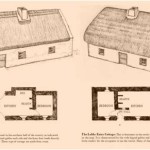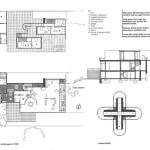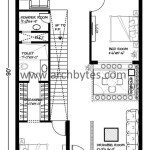Make My Own House Floor Plans: A Comprehensive Guide
Designing the perfect house requires careful planning, and creating your own floor plans is an empowering experience. Whether you're a seasoned designer or a first-timer, this guide will provide you with the essential knowledge to create functional and aesthetically pleasing house floor plans.
1. Determine Your Needs and Lifestyle
Before you start sketching, it's crucial to define your specific needs. Consider the number of bedrooms, bathrooms, living spaces, and other features you require. Think about your lifestyle, daily routines, and how you want to use the space. A clear understanding of your requirements will ensure a well-designed plan.
2. Set a Budget and Timeline
Establishing a realistic budget is essential to avoid overspending. Determine the cost of materials, labor, and permits. Setting a timeline will keep you focused and ensure the project progresses at a manageable pace.
3. Study Architectural Styles and Design Principles
Familiarize yourself with different architectural styles and design principles. Consider factors like natural light, flow of movement, and energy efficiency. Research online, consult books, or visit show homes to gather inspiration and ideas.
4. Draw Rough Sketches and Use Design Software
Start by sketching out rough floor plans on paper. This will help you visualize the space and adjust proportions as needed. Once you have a general layout, use design software to create detailed plans. Professional software offers precise measurements, 3D visualization, and customization options.
5. Consider Room Sizes and Proportions
Pay attention to room sizes and proportions to create a comfortable and harmonious space. Standard room dimensions can be found online or in design guides. Avoid making rooms too small or disproportionate, as this can affect functionality and aesthetics.
6. Plan for Natural Light and Ventilation
Incorporate ample windows and other sources of natural light into your design. This reduces energy consumption and creates a brighter and more inviting atmosphere. Adequate ventilation is also essential for maintaining air quality and preventing moisture buildup.
7. Optimize Flow and Functionality
The flow of movement throughout the house is crucial. Create open and well-connected spaces while maintaining distinct areas for different activities. Consider furniture placement and traffic patterns to ensure smooth movement and accessibility.
8. Seek Professional Input if Necessary
If you encounter complex design issues, don't hesitate to seek professional guidance. An architect or interior designer can provide valuable expertise, ensuring structural integrity and aesthetic appeal.
9. Review and Refine
Once you have a complete floor plan, take some time to review and refine it. Share your plans with family, friends, or a professional for feedback. Make adjustments as needed to optimize the design and ensure it meets your expectations.
Conclusion
Making your own house floor plans involves careful planning, research, and attention to detail. By following these essential steps, you can create a functional, aesthetically pleasing, and tailor-made floor plan that perfectly suits your needs and lifestyle. Remember, the process should be enjoyable and empowering, so embrace the experience and enjoy the satisfaction of designing your dream home.

Make Your Own Floor Plans

Designing My Own House

House Plans How To Design Your Home Plan

House Plans And Design

My Own House Design Model Free 3d Floor Plans By Planner 5d

Pulau House Plan Custom Designed Sater Design Collection Inc

Vignette Design Bucket List 7 Build A House From Scratch

Home Plan Kincaid Sater Design Collection

Build Or Remodel Your Own House Building A Small Plans

Featured House Plan Bhg 8993








